
Technology in the mobile app landscape is constantly changing and evolving, with some tech enthusiasts getting hyped over the so-called “next phase of the internet”, Web3, which is essentially web and mobile apps built on decentralized blockchain technology.
This encompasses other hot topics and emerging technologies like cryptocurrency, blockchain, and even virtual and augmented reality.
Metaverse, formerly known as Facebook, plans on investing $10 billion to develop products that support augmented reality (AR), like high-tech VR glasses and robotic appendages.
In short, it’s absolutely imperative to stay abreast of the latest developments in the tech world so you can offer your mobile app users more of what they want, whether it’s an arguably passing trend, like NFTs, or a piece of technology that’s likely to stick around, like AR.
In this article, we’ll highlight what’s trending in AR mobile apps development and what the future holds for businesses looking for the right opportunities in mobile app technology.

Table of Contents
- What is Augmented Reality?
- AR vs VR
- Augmented Reality Trends to Watch in Mobile Apps
- AR in Ecommerce
- Combining AR and AI
- AR Improving in Navigation
- AR in Healthcare
- AR Improving eLearning
- AR Increases Driver Safety
- Top Tools for Building Augmented Reality Apps
- ARToolKit
- ARKit
- Vuforia
- Types of AR Applications
- Marker-Based AR Apps
- Location-Based AR Apps
You may have heard how AR is disrupting every industry, from education and healthcare to retail and Ecommerce, but what is it exactly, and what is its place in the mobile app world?
AR uses technology to enhance our real-world environment through the use of computer-generated sensory stimulation like digital visual elements, sound or some other stimuli.
A prime example of this is the AR mobile app Pokémon Go, a game which superimposes digital content over our real physical world to give users the feeling of interacting with Pokémon via their devices.

Players can move around in the real world while interacting with digital element overlays, like Pokémon.
AR, of course, has applications that go far beyond gaming and has helped open the doors for a wealth of business opportunities in every industry, which we’ll take a closer look at later.
So how does AR compare to virtual reality, or VR?
1.1 AR vs VR
While AR and VR sound similar, they’re actually two very different technologies with their own distinctions.
Here’s a quick breakdown of the differences between AR and VR technology:
- AR uses a real-world environment whereas VR is entirely virtual
- AR users have full control over their presence in the physical world while VR users are controlled by the system
- AR can be accessed with mobile devices whereas VR requires a headset device
- AR has the ability to enhance both the real and virtual world, but VR can only enhance a virtual world
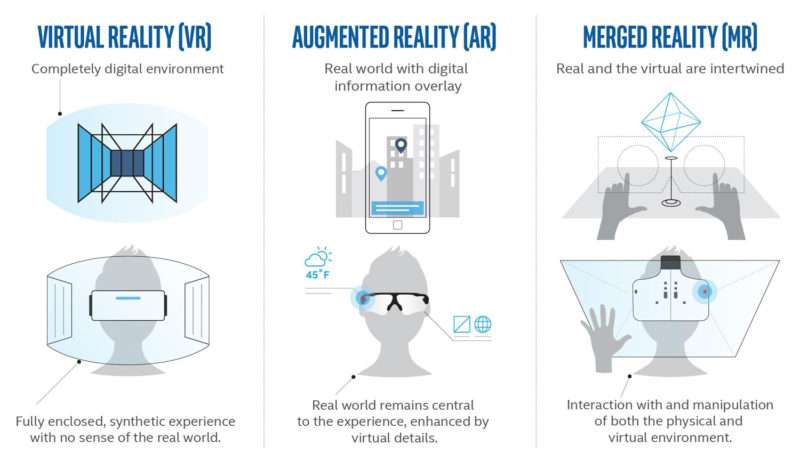
Photo Credit: toptal.com
In short, with virtual reality, you’re completely immersed in a fictional and virtual world which requires a high tech headset like the Oculus Quest or the Valve Index.
These headsets block out your surroundings and use LCD or OLED panels to fill your field of sight with the display.
PRO TIP:
It’s important to understand the difference between AR and VR technology so you can focus on what your target audience wants most from your app.
As AR tech advances, so too does its influence in mobile app development across a spectrum of industries.
And don’t let the word “trend” throw you off.
Sure, AR apps like Pokémon Go may eventually wane in popularity and die out completely, but the application and reach of AR technology itself isn’t going anywhere.
If anything, it’s only broadening in scope.
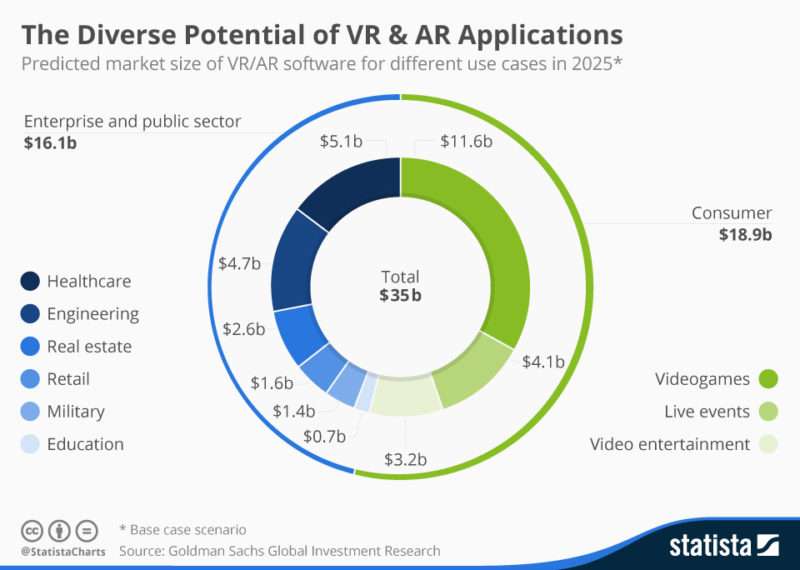
Let’s take a look at how AR tech is making a big splash in mobile app development.
2.1 AR in Ecommerce
AR has had a major impact on the way people shop.
A vast majority of big retailers are incorporating AR into their shopping apps to enhance the shopping experience.
In the Home Depot app, for example, users can see products in their home before they buy them. In the app, you can drag products like chairs, tables, and other furniture around your home to see how it looks.
Shoppers can even see how different paint colors will look on their walls.
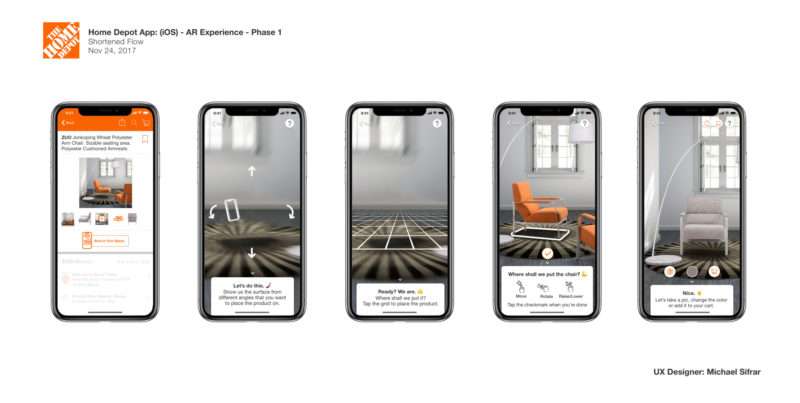
More and more Ecommerce apps are utilizing AR in this way. At the end of the day, it’s all about helping shoppers make purchases as quickly and easily as possible.
Other apps, like apparel companies, allow app iOS and Android users to see how clothing looks on them, as a sort of augmented reality fitting room.
With COVID-19, allowing shoppers to make purchases online with ease has been paramount to a business’s survival.
And even when the pandemic ends, it’s something people will still expect and want from apps.
2.2 Combining AR and AI
As AR tech advances, it makes sense that the software won’t just rely on human programmers.
Subfields in artificial intelligence, such as machine learning and neural networks, will have a heavy hand in improving augmented reality by performing tasks with greater accuracy and efficiency.
One way in which this AR-AI partnership can play a role in augmented reality mobile apps is by offering suggestions to shoppers using an AR interface, which can be based on natural language processing technologies.
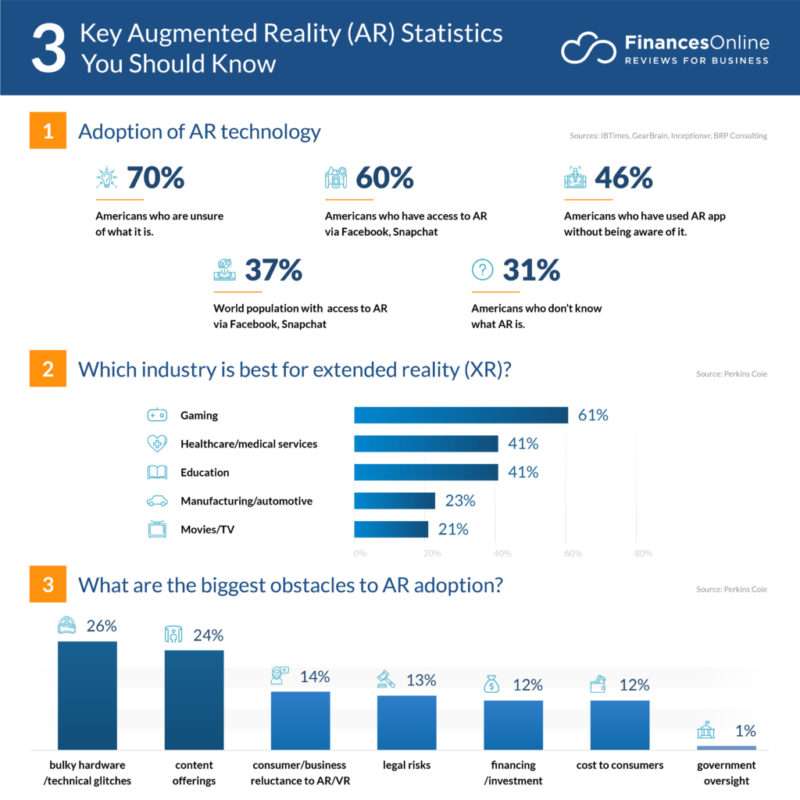
You can also see AI’s role in online shopping experiences like virtual fitting rooms, which requires facial features and body recognition—technology that’s only made possible through AI.
In short, artificial intelligence is already helping companies take their AR software to the next level.
But the future holds the promise of even better customer experiences.
2.3 AR Improving Navigation
Another trend in AR technology is it’s application in navigation.
While you may be familiar with Google products like Google Lens, Google Photos, Google Translate, or Google Assistant, Google launched a completely new product, Google Maps Live View, in 2019 for Apple and Android devices.
This lets users leverage AR to help them navigate when walking.
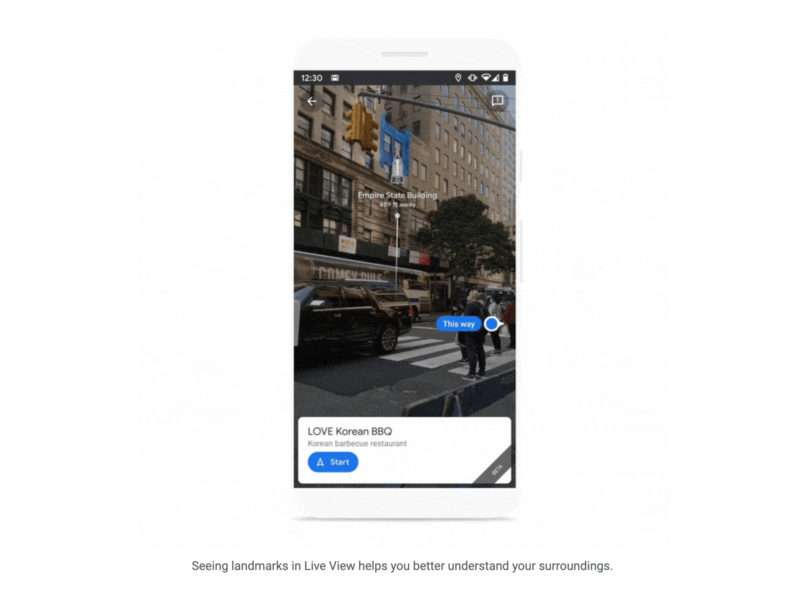
How it works is the phone’s camera can identify your location, and rather than presenting you with just a map, it superimposes directions and details on the phone display.
This also makes use of AI, which is what identifies what users see.
Since its inception, Google has since added additional features and functionalities, like the ability to superimpose landmarks as well as extend live view to more cities.
2.4 AR in Healthcare
AR has the powerful ability to offer hands-free solutions as well as IA-based diagnostic tools for healthcare professionals.
It makes things like telesurgery and remote patient support possible, which has become increasingly important in the current pandemic.
Additionally, AR paired with machine learning technology can aid in disease detection.
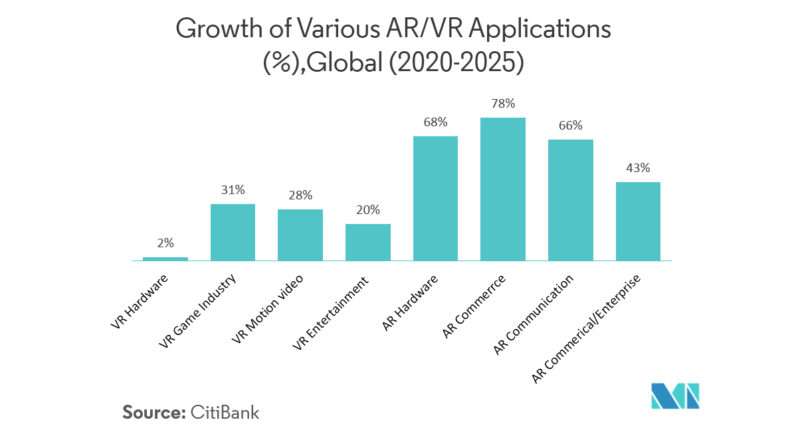
In 2020, Google announced their latest AR development—an AR-based microscope that can be used to improve the accuracy of cancer diagnosis and treatment.
The device captures images in real time and are then processed using computer diagnostics to automatically display results.
2.5 AR Improving eLearning
Online learning has become more creative and effective in recent years due to augmented reality technology.
Teachers and tutors can make use of animations and virtual graphics in-real time when interacting with their students.
Apps like Chromville Science make learning interactive by placing virtual objects in our physical world through augmented reality and artificial intelligence.
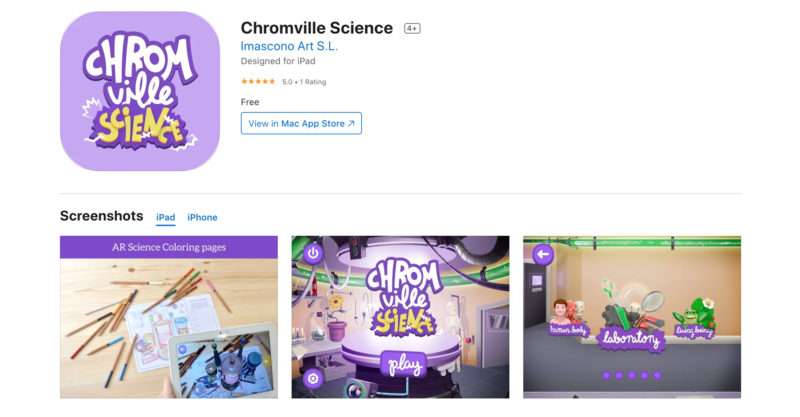
These kinds of educational apps create animated lessons in a variety of formats, including 3-D experiences and 360-degree virtual environments.
AR in educational apps have been especially beneficial during the pandemic.
Children haven’t been able to attend in-person classes and require a more engaging way of learning.
2.6 AR Increases Driver Safety
AR is even improving safety standards when it comes to driving through the use of vehicle apps, like a heads-up display (HUD).
HUD is a hologram-looking display that appears on a vehicle’s windshield or car panel and is a practical way to process important information when on the road.
It can display key data like the speed limit, vehicle speed, navigation instructions, and more, without users having to interact with it.
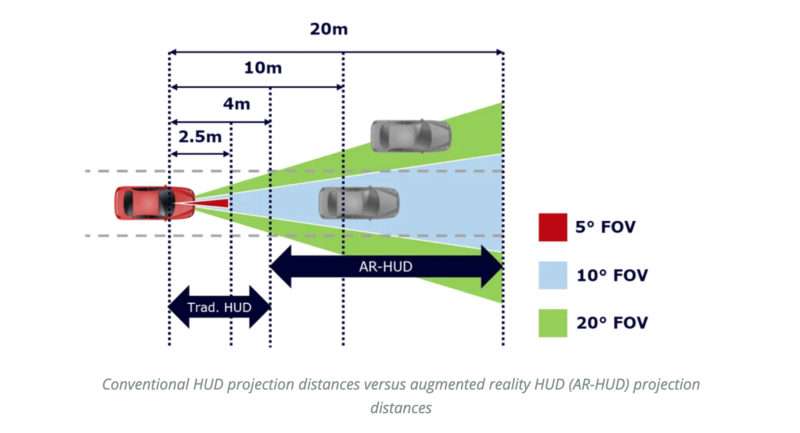
Photo Credit: azooptics.com
Additionally, more big car brands are rolling out iOS and Android app features that allow customers to experience a vehicle without having to go to a dealership.
Android and iOS users can see how a vehicle looks on their driveway in various colors through AR technology.
The great thing about getting into AR mobile applications development is that there’s no need to reinvent the wheel.
Unless your app is highly unique and ground-breaking when it comes to features and functionality, there’s a lot you can do with AR technology using existing software tools.
Let’s take a look at a few of the most popular tools for building the best AR
apps.
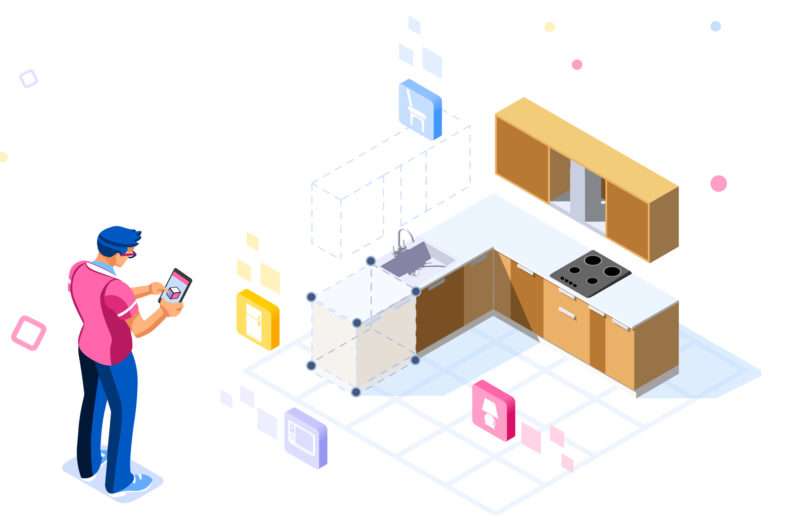
3.1 ARToolKit
ARToolKit is a free, open-source, multi-platform augmented reality tracking library.
It can create and position AR objects for any real-world application and comes with features like video tracking capabilities, supports native camera, GPS, and is high-performing.
It makes use of computer vision algorithms to track camera calibrations and object orientations to create virtual imagery.

3.2 ARKit
ARKit is a free tool by Apple that offers an abundance of useful AR features, such as motion capture, people occlusion, multiple face tracking, and more.
It also offers depth API which uses per-pixel depth information about the surrounding environment, making the virtual object occlusion more realistic through the enablement of instant virtual object placement into the physical surrounding.

3.3 Vuforia
Vuforia is a popular augmented reality SDK that supports main platforms like iOS, Android, UWP, and Unity.
PTC is the company behind Vuforia and also offer additional AR app development products, like Vuforia Engine, Vuforia Studio, and Vuforia Chalk.
Some interesting features offered by this SDK include text recognition, 2D and 3D object recognition, virtual buttons, smart glasses support and more.

PRO TIP:
It’s important to understand the difference between AR and VR technology so you can focus on what your target audience wants most from your app.
So you’re interested in adding AR technology to your app, but maybe you’re not too sure what type of AR app it’s going to be.
The key thing to understand is that there are two primary types of AR applications: marker-based apps and location-based apps.

4.1 Marker-Based AR Apps
This type of app, also referred to as recognition-based AR, detects real objects in your physical environment and superimposes virtual objects on top of it.
This type of technology relies on the identification of user-defined images, or markers, in order to function.
These markers are distinct patterns easily recognized by cameras and are visually independent of the environment around them.
Markers are needed to activate the AR. How it works is the marker gets scanned by the mobile device camera feed which triggers the AR experience, whether that’s an animation, virtual object, text, or something else.
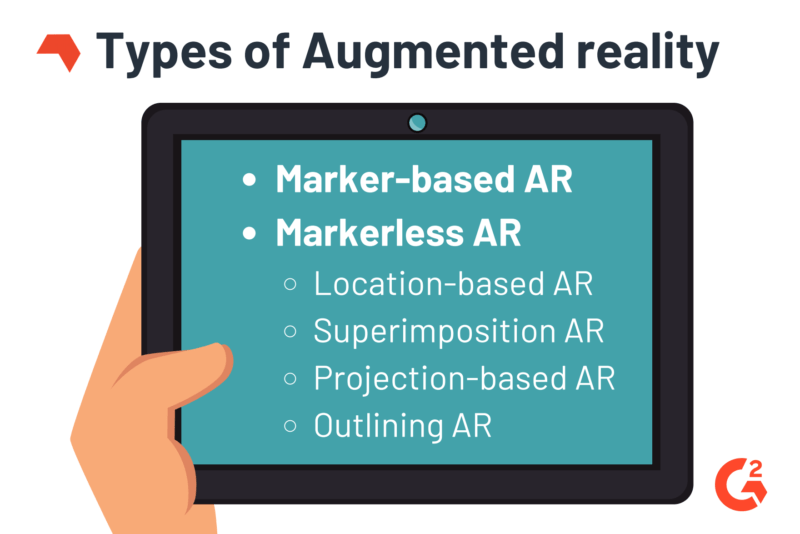
A great example of marker-based AR would be an AR QR code.
The device detects the QR code on a business card (or on some other medium) and deploys the augmentation.
4.2 Location-Based AR Apps
Since the majority of smartphones include location detection as a feature, AR location-based apps can easily read the device’s camera and GPS data and implement an augmentation.
It can not only locate where a user is but where they’re focusing to trigger relevant information or data. Virtual objects can then be mapped to specific locations and displayed when the user’s device matches the location.
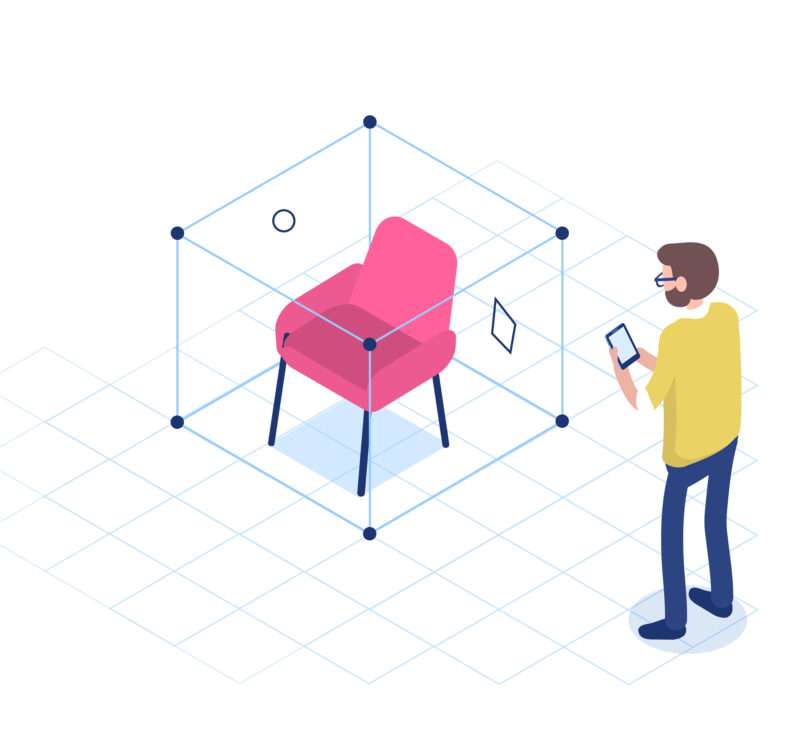
This is different from marker-based AR that requires an image or object to work.
An example of a location-based app would be the game we touched on earlier, Pokémon Go, which detects a user’s whereabouts to superimpose virtual Pokémon at their location and points of interest.
Augmented reality is a trend that isn’t going away.
It’s only going to become more advanced, with a wider breadth of applications for its uses as the technology evolves.
If you’re ready to move forward with implementing the latest augmented reality technology into your augmented reality app project, let us help you get started with our Simple Starter package.
This includes a full technical writeup of your project along with wireframes and mobile app research.
What do you think will be the next step in AR evolution and what are you most excited to see in top AR apps?




